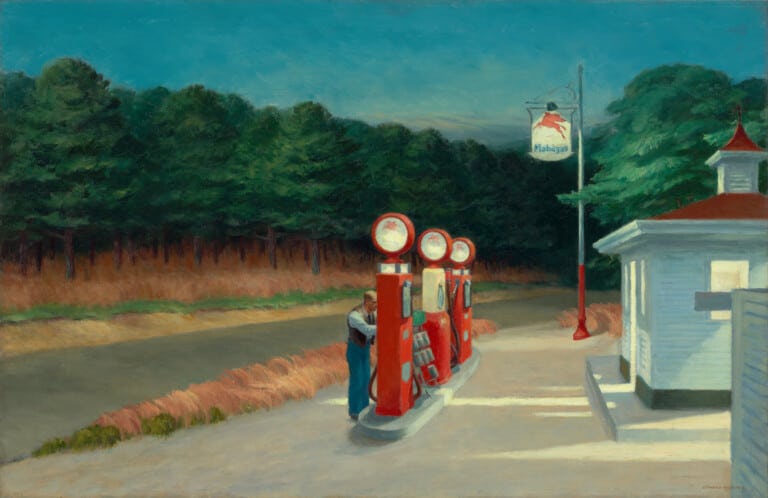Defining the (literary) self and the nation: representative figures
As an aesthetic phenomenon, Modernism refers to a period that ended in the late 1930s to early 1940s.
The term “modernism” was first used in Germany in the 1890s, the period in which Modernism is said to have appeared.
Unlike such terms as Romanticism or Classicism, Modernism does not refer to the qualities of works of art in a particular period: it is based on the idea that works of art represent a rupture, a break with the past.
Historians say that Modernism is the result of the general transformation of society caused by industrialism and technology during the 19th century.
It was in the big urban centres of Europe that the industrial innovations, the social tensions, and the economic problems of modernity were most intensely manifested.
Therefore, it was also in those cities that the first manifestations of modern art appeared.
During the two decades before World War I, the legitimacy and authority of public institutions were decreasing. Those public institutions were no longer universally accepted after World War I and this vacuum was filled by the arts.
Many artists believed it was now the function of art to define and orient the expectations of both the individual and the collectivity. This vision of the function of art reflects an entire moment in the history of Western societies, especially European societies.
Marked by the revolutionary effects of industrialism, this moment in history also reflected the collective belief that conventions and institutions were not eternal: like any social formation in a capitalistic system, those institutions were subject to perpetual change.
At the level of artistic production, this collective consciousness of permanent change found its most radical expression in subversive aesthetic practices.
For instance, in Dada, the creation of Tristan Tzara, expression seems to be based on radical rupture. The “raison d’être” of artistic production was to negate all social and aesthetic conventions. Every artistic work was supposed to be a new and marginal form of expression.
Moreover, every artistic attempt was a form of engagement with social and historical change.
How can we define American Modernism and its representatives concerning this definition of European Modernism?
First, it is important to notice a major contrast: while for the European modernists, art represented a dynamic engagement with historical change, for most American modernists, art was seen as a continuous effort to develop the individual character of the artist and his artistic identity.
In this sense, the early American modernists were more in continuity with their mid-19th-century predecessors. Writing at a remove from society, their art (contrary to the European modernists) was less obsessed with experimental innovations or social change.
For most American modernists, developing an individual character and a literary voice was an act of self-marginalization from society (a materialistic society based on the logic of business and the accumulation of money). It is no surprise that many critics consider Henry James the first modernist author.
His conception of art reveals a man committed to an artistic vision that both expresses and attacks the spiritual emptiness of materialism and the pursuit of enrichment.
However, Henry James did not think of his art in terms of historical mission or social critique. Instead, he considered that the highest expressions of art are those that exist beyond historical contingency.
In this sense, the first American modernists were the descendants of H. James. Their common relationship with James and each other is their belief that they are at the margin of their culture. What made them different from such a culture was their strong resolve not to be influenced by its commercialism and its bourgeois consumerism.
Among these first modernists, we find such representative artists as Ezra Pound, T.S. Eliot, Gertrude Stein, and Williams Carlos Williams. For this latter, being an artist or a writer meant first and foremost standing at the margin of a country dedicated to business.
In his book-length essay entitled In the American Grain (1925), Williams Carlos Williams tried to describe the alienated experience of the poet in an American society dominated by materialistic bourgeois ideals.
He also tried to describe the sense of sterility and isolation of individual existence in a materialistic society. This book describes an America alienated from its past and its monumental nature. For Williams, past and nature are the sources of vitality and creative energy:
“Bill Bird (a publisher Williams had met in Paris) says that Americans are the greatest businessmen in the world: the only ones who understand the passion of making money: absorbed enthralled in it. It’s a game. To me, it is because we fear to wake up that we play so well. Imagine stopping money-making. Our whole conception of reality would have to be altered.”
Williams Carlos Williams
Even in his judgment of the American language, Williams thought money-making would “infect” daily and literary discourse. The mission of the poet was therefore to renew the use of language and to adopt an original diction.
As his long poem Paterson indicates, this original diction should reflect the vital energies of life, the opposite of the energies dedicated to economic production and consumption.
Other literary figures
Unlike Williams, T. S. Eliot and Ezra Pound developed their mature literary vision in Europe. Still, their aesthetic and intellectual evolution reveals their deep American concerns.
In the history of modernism, Eliot and Pound appear as powerful catalysts, poets who brought about change and exerted significant influence over other literary figures.
Even when they settled in London, Eliot and Pound had been, in different ways, deeply influenced by the French Symbolists and the more recent French poetry and literary criticism.
To a great extent, such poetry and literary criticism allowed them to evolve beyond conventional literary criteria and poetic practices – it allowed them to discover the possibility of new and original modes of literary criticism and poetic expression.
As far as poetics is concerned, both poets found in European and cultural heritage a vast source of inspiration.
Concerning Eliot, Europe – with its rich past – provided the ideal imaginary scene for the poet seeking to create a literary identity and a world vision.
In this respect, Eliot’s entire oeuvre can be considered an expression of the internal drama of his intellectual and artistic development.
When The Waste Land (1922) appeared, not only was it considered a highly accomplished poem, but it was also viewed as a historical document: a testimony of cultural anxiety that signalled a deep transformation in human sensibility.
However, recent studies have indicated that The Waste Land is more personal than historical testimony: it is the testimony of a tormented sensibility struggling to find spiritual assurance in a world of spatio-temporal fragmentation, a world governed by the fragmentary logic of capitalistic instrumentality.
Throughout his oeuvre, Eliot tries to oppose a total vision of the fragmentary world of modernity.
In both his plays and poems, the quest for total vision emerges as an attempt to situate the self with the restored cultural and religious tradition of the Western world.
Needless to say, Eliot’s vision of a restored Western world tradition stands in stark opposition to the project of modernity as a whole. In Eliot’s world vision, this project was systematically associated with American capitalism and its European variant.
Hence, the primordial ideal of the artist is to develop an identity removed from the increasing materialism of the modern world: a world in which, as he said, “the acquisitive, rather than the creative and spiritual instincts are concerned”.
Facing the bourgeois consumerism of an increasingly instrumental capitalist society, many American modernists shared Eliot’s conception of the literary persona.
According to those modernists, the only form of cultural production offered by a consumer society is mass culture. They saw the self-marginalization of the artist as a necessary condition of literary freedom and inspiration.
Many writers were preoccupied with cultivating their artistic freedom. Therefore, they resisted what they considered as the superficiality of mass culture.
In the years following World War I, some were disillusioned enough by the materialism of American culture to live for Europe (E. E. Cummings, F. Scott Fitzgerald, Ernest Hemingway, and Gertrude Stein).
Although they were collectively called “the lost generation”, these authors were bound together more by their artistic sensibility than by a set of common beliefs. Europe, mainly Paris, provided the authors of the lost generation with a perfect cultural atmosphere in which they could develop a sentimental attachment to Paris.
Gertrude Stein captured the literary importance of Paris when she said that Paris was “where the 20th century was”.
A note on the literary scene, modernism is also the age of the literary magazine and the magazine of political and cultural critique. The early and mid-twentieth century saw the appearance of such magazines as The Masses (1911), Poetry (1912), The New Republic (1914), The Seven Arts (1916), and The American Mercury (1924).
Each magazine served as an important forum for cultural criticism, fresh political debate, and avant-garde hysteric ideas. Radical cultural transformations were the order of the day.
The editors of The New Republic, for instance, proclaimed that the goal of their magazine was “less to inform or entertain its reader than to start little insurrections in the realm of their convictions”.
The Seven Arts presented many of America’s most important literary voices: Sherwood Anderson, John Dos Passos, Theodore Dreiser, Robert Frost, and Amy Lowell.
In the 1920s, The Dial emerged as the most prominent literary monthly in America. Its contributors included writers of international fame such as Thomas Mann, Jules Romain, and William Butler Yeats.
Among the newly celebrated American writers, T. S. Eliot, E. E. Cummings, and Hart Crane were also published in The Dial.



hi ,thank you very much for your interesting essay.I’am a third student university and i want to do my research on American literature especially modernism ,can you help me by giving me some references concerning this topic?it will be nice of you to answer me .
Hello,
The Norton Anthology of American Literature is one of the most useful resource for studies on American Literature. You can also take a look at the American Literature Web Resources by the Project CROW.
hi Iam an english teacher mANY THANKS FOR YOUR PRECIOUS HELP